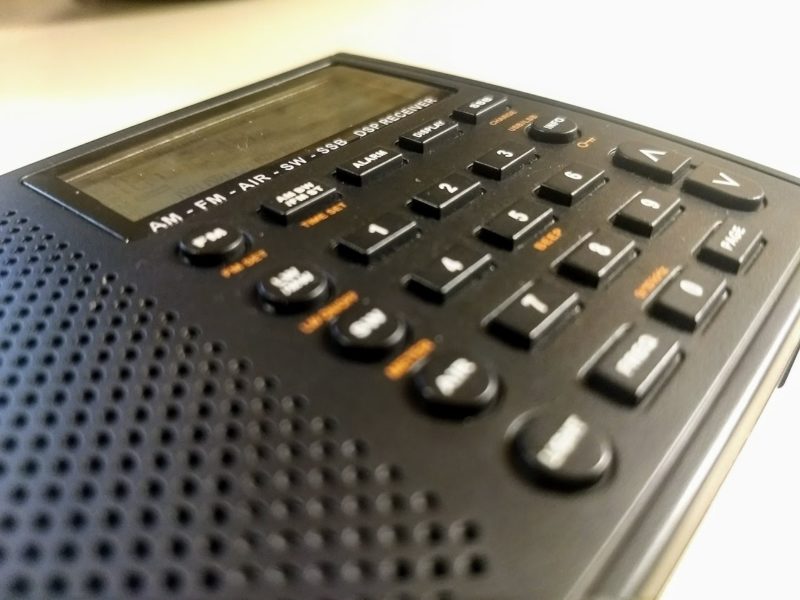 Many thanks to SWLing Post contributor, Dan Robinson, who shares the following guest post:
Many thanks to SWLing Post contributor, Dan Robinson, who shares the following guest post:
Big news in these days of declined shortwave
by Dan Robinson
It is rare — no super rare — that we get any good news these days about shortwave broadcasting. Remember the excitement a few years ago when Guinea returned to shortwave? Then, Nigeria returned but has now become worryingly intermittent.
Today, a station returned to shortwave, one that was absent for some time.
CFVP, the low power relay of 1060 kHz AM in Calgary, Alberta returned to 6,030 kHz with the help of amateur radio operators. The station had been off the air through 2019 — the last time it was reported was in late 2018 when it was relaying CKMX 1060 AM in Calgary.
According to a note posted on the World of Radio group:
“two engineers from Bell Media, Dale and Gerry, who are also hams, VA6AD and V6QCT respectively, rebuilt the transmitter (partially with ham radio parts) and repaired the connection to the antenna with a temporary matching network…the temporary matching network means that not all the 100 watts are going into antenna.”
According to Harold Sellers, who is acting as eQSL manager for the re-activated shortwave station, CFVP 6030 was back on the air as of 0900, though I was unable to hear it until later on June 19th. Best reception was via SDR sites in southern Alberta, northern Montana, Idaho and up in Edmonton, Alberta.
Programming consisted of straight comedy routines from Funny 1060 AM, the Calgary station that carries old recordings of standup comedians, with local IDs and ads mixed in every few minutes. I made a video showing CFVP reception on one of the SDR sites, changing between 6,030 kHz and 1060 kHz which was also audible at SDR locations.
Earlier this year, in March, DX’er Don Moman reported the following, which proved to be true:
” . . .They had a transmitter problem which has been fixed, but they have also identified an antenna issue. The problem [was] troubleshooting and testing the antenna and matching network in the point blank presence of a 50kw AM transmitter. Testing/ repair on CFVP radiator will be done when the 50kw signal can be powered down or off, to enable more accurate testing. Bell will not power down or shut down during ratings periods which are long and frequent. Having said that, repair will likely happen with the above taken into consideration, as well as warm weather. Best guess: Before next winter at the latest, this spring the earliest.”
In August, Harold Sellers reported that the ground at the base of the shortwave tower was under water, and that grounding rods and ground wire needed replacement, and later that the tower grounding had been replaced/fixed. The transmitter also had issues but was repaired and back out at the site.
I quickly sent a reception report to the email address provided by Harold Sellers, and was pleased to receive back a eQSL which Harold said was the second one sent out to those who heard the station on its re-activation day.
Those of us who began our listening in the 1960’s (some much earlier than that!) remember the great days when Canada had a number of regional stations on shortwave. QSLs from some of those, including a 1983 QSL from CFVP/Calgary, are attached to this article.
A screenshot of CFVP as it was being heard on reactivated 6,030 kHz is also shown.
Interestingly, the Wikipedia listing for CKMX shows 6,030 kHz as being active — it’s not known, however, whether the Wikipedia listing was ever updated to note that 6,030 kHz was off the air for nearly 2 years.


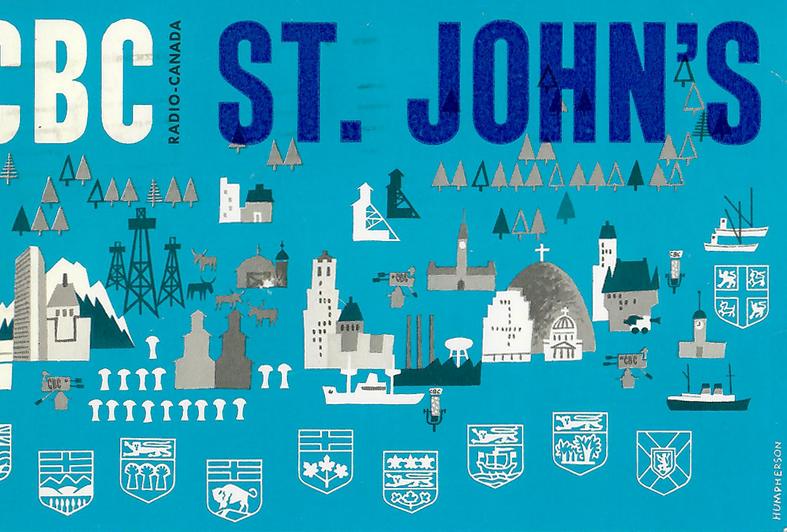
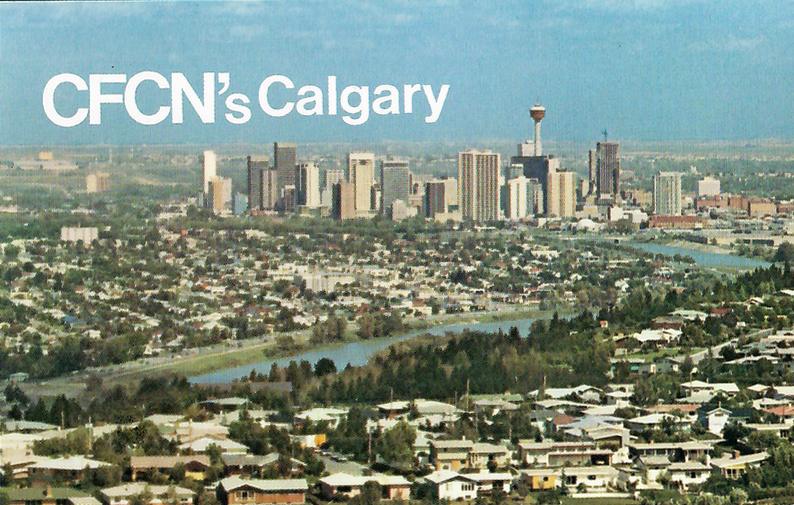
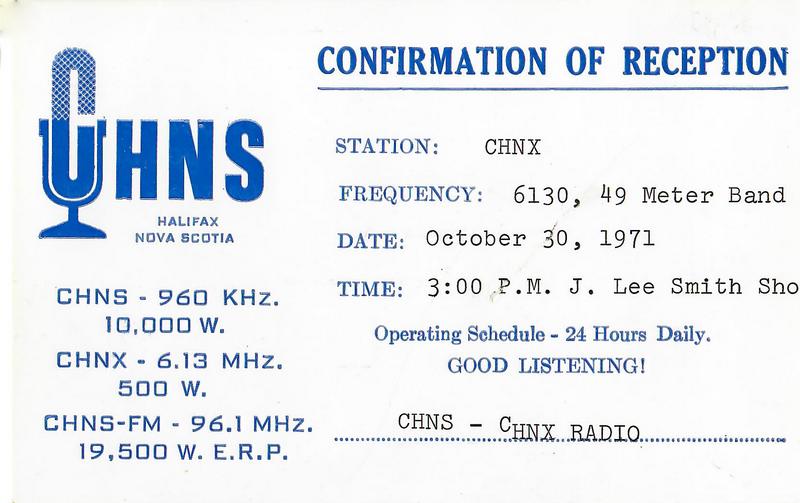
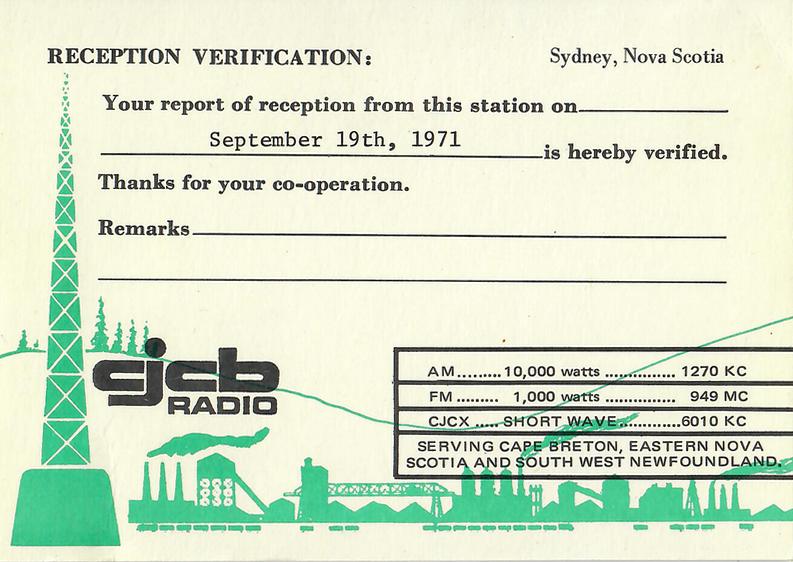
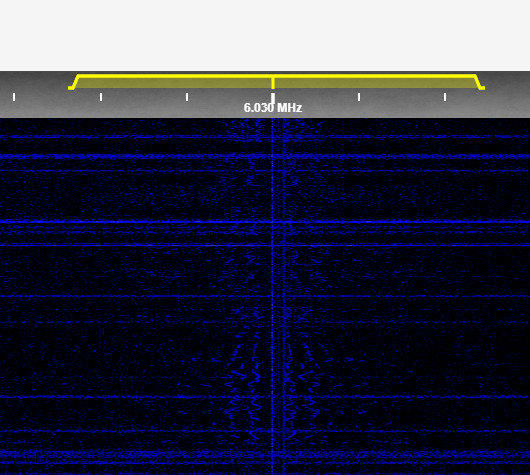
Heard CFVP from about 13:00 -1600 UTC on March 30, 2022. When I checked again at 02:00 UTC on March 31, the signal was still audible under Radio Marti. This is from Edmonton, Alberta, about 300km North of the transmitter.
Received CFVP this morning on 6030 KHz @ 13:45 UTC which is 7:45 AM local time. SINPO was 45454. The thing is, I listened in NW Calgary.
The comedy programming is terrible. In the mid 90s they were known as MIX 1060 ( on MW) and played great new music and really fun DJs.
I’ll be asking for a QSL with a couple of recordings I made with the iPhone.
73s and the best of DX to all
Kim H.
At work after reading this I clicked on the Northern Utah WebSDR and found a signal at 6030. Since I’m missing a headset at the moment, I can’t know if that’s it or not. (11:30UT / 05:30AM MDT), will update when I can. Distance (from Google Maps) approximately 700 miles / 1,100 km.
Also I have to comment: WHY, at only 100 watts, is the SW station co-located with the 50kW MW station? Couldn’t they just put it on the studio roof and it would be MUCH easier all around?
I’ve been wondering and trying to get the Voice of the Prairie since last winter’s Top 10 DX of the Year Contest. Months ago posted on their Facebook page but no reply. I’m in SW Idaho so if only Radio Marti would get out of the way. . .
This station is such an enigma. I understand why it existed historically – it was to relay a station to remote prairie areas for news and information. But the parent station (1060 AM) has been bouncing around different formats since the mid-1990s and I can’t imagine there are many people out in the prairie tuning in for 24/7 stand-up comedy.
Is its continued existence down to enthusiastic amateurs, or is there still a commercial reason for keeping it running?
Yes, all of these questions are true — but who cares! We have a new SW signal
to go after….. (:
Thanks to the hams who helped get the station back on SW! Kim Heinze, Calgary Alta
Great that they got this back on the air, but it’s gonna be quite the challenging catch for most of us! Especially with Radio Martí and Cuba’s jammin’ masheen running full tilt boogie most nights on the same channe.
Wow, you’re righter than right! Finally got a headset so I could listen on Utah WebSDR and all I heard was noise. Only hope is an antenna that can null Cuba well. FWIW, Castro’s jammers are pretty effective, I wonder where he got them?
1060 AM is most nights at least S7 to S9 here in the Cascade foothills (~20 miles west of Mt. Rainier).
1060 & 660 are my two reference stations to check on listening conditions to the NE.
I’ll have to see if we can snag 6030 kHz down here.
Man, whenever a voice raises again, it’s always a joy being able to listen to it, be it feble or strong, this is very good news, and I hope that others from ham community or not, may be able to contribute and bring the station back on air; maybe it’s impossible to do it for all the disappearing stations, but I believe it’s at least worth a try
You can always click the History at the top of any Wikipedia article to see the log of edits, and you can click any timestamp to see how the page appeared after a given edit. This is sometimes just as interesting and valuable as the present-moment content in the article itself, and every Wikipedia user should get in the habit of peeking at it!
Though posted today June 22nd, the re-activation day was June 19th.